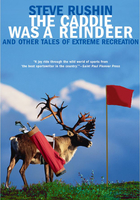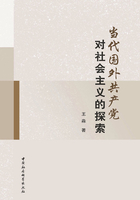This version of Buile Suibhne is based on J. G. O'Keeffe's bilingual edition, which was published by the Irish Texts Society in 1913. In the meantime, Flann O'Brien gave its central character a second life, as hilarious as it was melancholy, when he made Sweeney part of the apparatus of his novel At Swim-Two-Birds; and a number of other poets and scholars have continued to make translations of different sections of the verse.
The basis of the 1913 edition is a manuscript written in County Sligo between 1671 and 1674. This manuscript is part of the Stowe collection in the Royal Irish Academy and O'Keeffe believed that, on linguistic grounds, 'the text might have been composed at any time between the years 1200 and 1500'. Nevertheless, the thing was already taking shape in the ninth century. O'Keeffe cites a reference in the Book of Aicill, a text dating from the tenth century at the latest, to stories and poems relating to Sweeney's madness; and other evidence from literary and historical sources leads him to conclude that the Buile Suibhne which we now possess is a development of traditions dating back to the time of the Battle of Moira (AD 637), the battle where Sweeney went mad and was transformed, in fulfilment of St Ronan's curse, into a bird of the air.
What we have, then, is a literary creation; unlike Finn McCool or Cuchulain, Sweeney is not a given figure of myth or legend but an historically situated character, although the question of whether he is based upon an historical king called Sweeney has to remain an open one. But the literary imagination which fastened upon him as an image was clearly in the grip of a tension between the newly dominant Christian ethos and the older, recalcitrant Celtic temperament. The opening sections which recount the collision between the peremptory ecclesiastic and the sacral king, and the closing pages of uneasy reconciliation set in St Moling's monastery, are the most explicit treatment of this recurrent theme. This alone makes the work a significant one, but it does not exhaust its significance. For example, insofar as Sweeney is also a figure of the artist, displaced, guilty, assuaging himself by his utterance, it is possible to read the work as an aspect of the quarrel between free creative imagination and the constraints of religious, political, and domestic obligation. It is equally possible, in a more opportunistic spirit, to dwell upon Sweeney's easy sense of cultural affinity with both western Scotland and southern Ireland as exemplary for all men and women in contemporary Ulster, or to ponder the thought that the Irish invention may well have been a development of a British original, vestigially present in the tale of the madman called Alan (Sections 46–50).
But the work makes its immediate claims more by its local power to affect us than by any general implications we may discover in its pattern. We have to go to King Lear, to Edgar's jabbering masquerade as poor Tom – itself an interesting parallel to Sweeney's condition – to find poetry as piercingly exposed to the beauties and severities of the natural world. We may even want to go back further, to the hard weather of the Anglo-Saxon 'Seafarer', or, in order to match the occasional opposite moods of jubilation, to the praise poetry of the early Irish hermits. It was the bareness and durability of the writing in Buile Suibhne, its double note of relish and penitence, that first tempted me to try my hand at translating it and gave me the encouragement to persist with stretches of less purely inspired quatrains.
My first impulse had been to forage for the best lyric moments and to present them as a series of orphaned passages, out of the context of the story. These points of poetic intensity, rather than the overall organization of the narrative, establish the work's highest artistic levels and offer the strongest invitations to the translator of verse. Yet I gradually felt I had to earn the right to do the high points by undertaking the whole thing: what I was dealing with, after all, is a major work in the canon of medieval literature.
Nevertheless, a small number of the original stanzas have been excluded (See Notes). I have occasionally abbreviated the linking narrative and in places have used free verse to render the more heightened prose passages. O'Keeffe has been my guide to the interpretation of the line-by-line meaning, though I have now and again invested the poems with a more subjective tone than they possess in Irish. The stanza forms employed do not reflect the syllabic and assonantal disciplines of the original metres, but since the work could be regarded as a primer of lyric genres – laments, dialogues, litanies, rhapsodies, curses – I trust that the variety of dramatic pitch in the English will compensate to some extent for the loss of the metrical satisfactions in the Irish.
My fundamental relation with Sweeney, however, is topographical. His kingdom lay in what is now south County Antrim and north County Down, and for over thirty years I lived on the verges of that territory, in sight of some of Sweeney's places and in earshot of others – Slemish, Rasharkin, Benevenagh, Dunseverick, the Bann, the Roe, the Mournes. When I began work on this version, I had just moved to Wicklow, not all that far from Sweeney's final resting ground at St Mullins. I was in a country of woods and hills and remembered that the green spirit of the hedges embodied in Sweeney had first been embodied for me in the persons of a family of tinkers, also called Sweeney, who used to camp in the ditchbacks along the road to the first school I attended. One way or another, he seemed to have been with me from the start.
S.H.















